What It Means to be a Responsible Tech Company
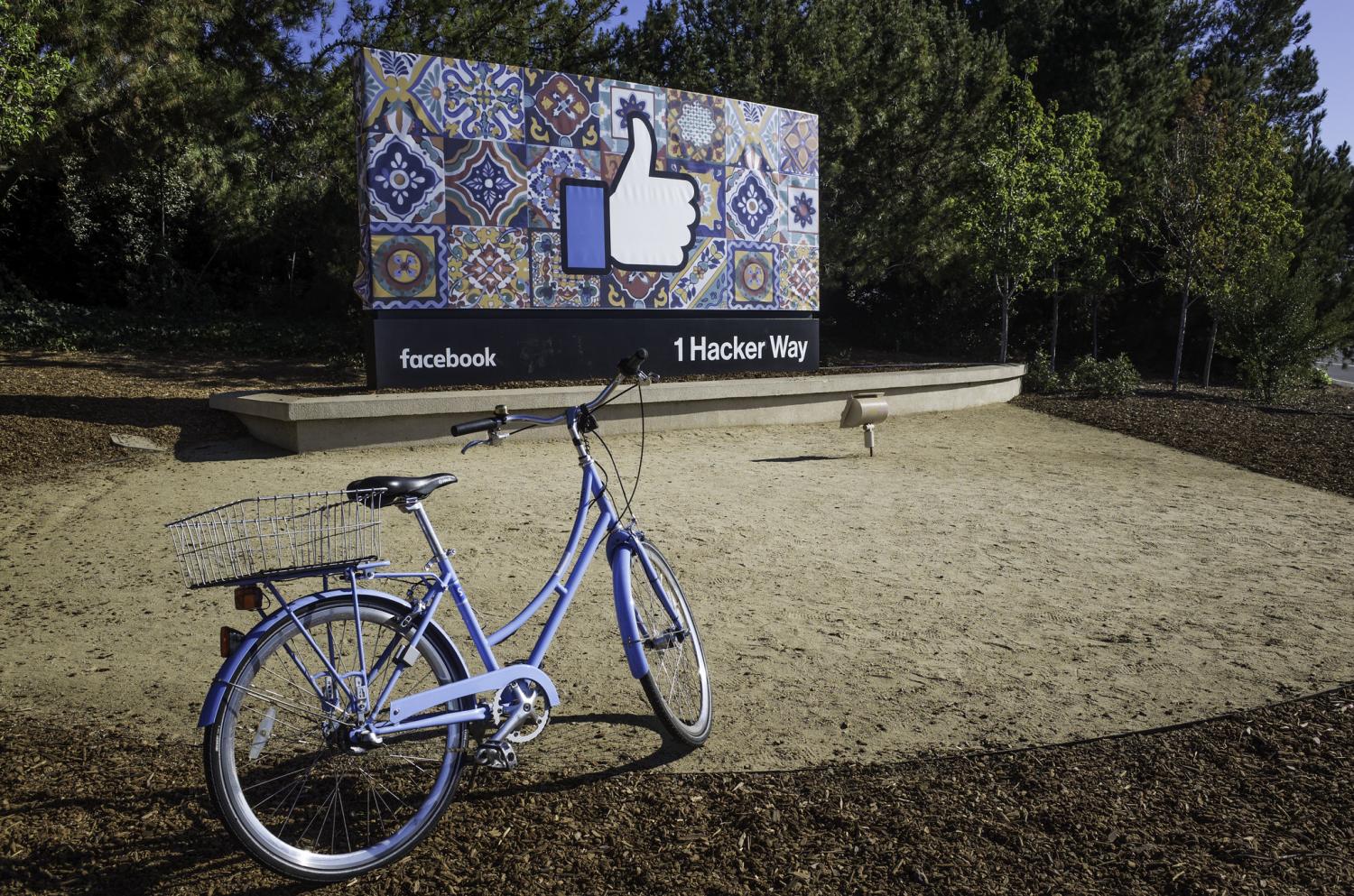

The world was abuzz earlier this month when Facebook CEO Mark Zuckerberg announced that he would donate 99 percent of his company shares to charitable causes over his lifetime. The announcement drew criticism about how the donation (currently worth $45 billion) would be apportioned, and for some it brought to light a bigger question about how tech giants decide to give back.
Billionaire tech philanthropy is nothing new. In October, when Square filed its initial public offering, CEO Jack Dorsey (of Twitter fame) announced that he would give 40 million of his shares, the equivalent of 10 percent of the entire company, to help underserved communities and “drive positive impact.”
And last month Bill Gates drew headlines when he announced that he would join more than 20 other billionaires – including Zuckerberg, Jeff Bezos of Amazon, Richard Branson of the Virgin Group and Marc Benioff of Salesforce – to launch a coalition that invests in clean energy projects around the globe.
Throwing money at causes doesn’t solve problems, but it certainly helps. It takes a lot more than dollar signs, though, to create lasting impact and be a truly responsible corporate citizen (tech or not).
It starts from within
For a growing list of companies, corporate responsibility has taken the form of employee volunteer programs. These programs have been on the rise, in part due to the fact that millennials will comprise about half of the U.S. workforce by 2020, and more than 50 percent of millennials want to work at a company involved with causes. Clearly companies realize the recruitment and retention benefits of engaging employees in this way.
The range of corporate volunteer programs varies. Some companies host an annual day of service, while others offer everything from 20 to 80 to unlimited hours of paid time off for volunteering on the job.
In addition to engaging employees through volunteering, some companies leverage more than their workforce to give back. Salesforce, for example, is known for pioneering a 1-1-1 model that donates 1 percent of the company’s equity, product and employee time to give back to communities around the world.
“The work of Salesforce.org has had a significant impact on the communities where Salesforce employees live and work,” Ebony Frelix, VP of philanthropy and engagement at Salesforce.org, told 3p. “This type of integrated philanthropy encourages companies and individuals to become corporate citizens in their communities, and gives our employees something to feel connected to."
Every Salesforce employee is able to spend six paid days every year volunteering, and each employee that reaches six days is granted a “Champion” grant of $1,000 to give to a nonprofit of their choice. To date, Salesforce.org has donated $100 million in grants, employees have volunteered 1.1 million hours, and the Salesforce product now powers more than 27,000 nonprofits.
What is great about this model is that it takes a systems approach to doing good, rather than trying to solve a problem by only writing a check.
Tech-quity
Indeed, businesses can do a lot more to support their local communities beyond giving away cash.
Upon Uber’s announcement in October of its plan to move its corporate headquarters to downtown Oakland, California, the city’s Mayor Libby Schaaf outlined her thoughts in a letter to Uber executives on how the tech company could make its move to the city across the Bay in a way that contributes to a “more vibrant and equitable city where [everyone] thrives.”
In particular, Mayor Schaaf called for businesses to support the city’s local economy, strive for equity, be a compassionate neighbor and fight displacement. Schaaf encouraged actions such as sourcing locally, eating and shopping at local small businesses, providing educational and job opportunities for low-income, young people of color from local public schools, hiring Oakland residents, encouraging employee volunteerism, reducing environmental impacts, and partnering with the city to identify creative solutions to help address the region’s affordability crisis.
“You chose Oakland because of its magic,” Oakland Mayor Libby Schaaf wrote in a letter to Uber executives. “This is how you can help us preserve it … [s]trive for equity, tech-quity, providing equitable access to top-notch technology training and jobs for our residents and fostering our local technology sector’s growth so it leads to shared prosperity.”
Tech-quity is certainly something other tech companies can strive for, as well.
Getting to resilience
Being good and doing good is not only about helping communities; it’s about creating resilience.
“Resiliency is much more than just earthquakes,” Patrick Otellini, chief resilience officer for the city and county of San Francisco told 3p. “Whatever [companies] can do internally to create a culture of involvement and giving back, in disaster relief and general volunteering, is a good for everyone.”
While the resilience conversation often focuses on climate adaption, disaster preparedness and economic vitality, resilience is really more than that. It’s about creating communities that thrive – for all people. Because communities that don’t thrive eventually crumble.
Tech companies, especially those in Silicon Valley valued in the range of $5 million to $500 million, certainly have a role to play, and it can involve more than money.
Requests for an interview with Uber went unanswered by press time.
Image credit: Flickr/Jimmy Baikovicius
U.K. Moves Backward After COP21, Cuts Solar Subsidies
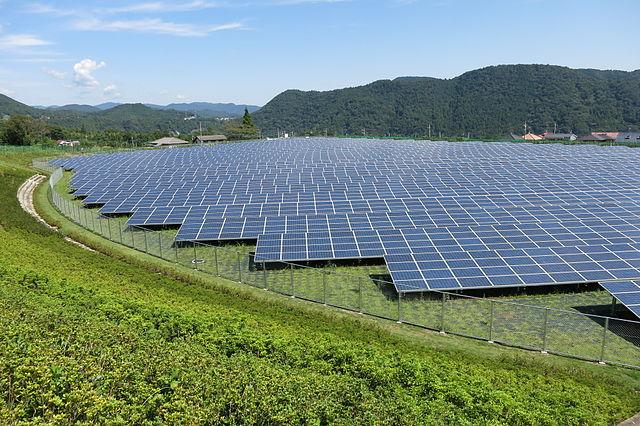

In the aftermath of COP21, we need to shift rapidly to renewables in order to meet the goals set in the Paris Outcome. For some reason, the United Kingdom doesn't want to play along.
One of the reasons that COP21 ended with a stronger-than-expected agreement is that many developed countries stepped up to the plate. We saw strong financial commitments from the United States, Germany, Norway and even China. And we must also credit France, a masterful host, pushing forcefully for an agreement while showcasing its own commitment to renewable energy.
One country that was noticeably quiet was the U.K., whose right-wing government, apparently, wasn't even paying attention to COP21. They were busy gutting their green policies and promoting dirty energy like it was 1950.
In fact, earlier this week, news broke that the U.K. plans to drastically cut solar subsidies. From the Guardian:
"The government has decided to cut subsidies to householders installing rooftop solar panels by 65 percent just days after agreeing to move swiftly to a low-carbon energy future at the climate change conference in Paris."
What makes this even worse is that there was no complimentary move to reduce fossil fuel subsidies, for which the U.K. spends $4.2 billion a year. These fossil fuel subsidies are a major barrier to progress on clean energy as they artificially keep dirty fuel prices low and incentivize people to use more, not less, fuel. Moreover, study after study has shown that the poor – the main reason for many of the subsidies' existence – gain little benefit from them. In fact, the main beneficiaries are the wealthy.
How much are solar subsides capped at now? According to Friends of the Earth, just 35 million British pounds per year (about US$52 million). Even after COP21, the U.K. believes it needs to give fossil fuels eight times more support than solar.
“It’s outrageous that the government continues to hand out billions of pounds in subsidies every year to climate-wrecking fossil fuels, while trying to block the clean energy sources we urgently need to power our homes, hospitals and schools,” said Alasdair Cameron, a Friends of the Earth renewable energy campaigner, in a statement.
Knowing this, you probably shouldn't be surprised that the U.K. is far behind its neighbors France, Italy and Germany in solar. Germany – which has only slightly more solar irradiation than the U.K. – has six times the installed solar capacity, 38,301 megawatts, due to government policies that strongly promote renewables. On a per-capita basis, it's even worse with the U.K. ranking a paltry 15th in the European Union. This is definitely not the time to be cutting subsidies.
Wind is little better, but the U.K. – despite its vast wind resources -- ranks only at 13th in the EU per-capita, lagging, again, behind Germany and Spain.
What the U.K. is pushing forward on is fracking, which recently received government support during COP21.
Thankfully, the British people aren't falling for their government's follies, and are mostly opposed to both fracking and the solar subsidy cut. If we are to meet the goals in the Paris Outcome – goals that U.K. signed on to – then we need to promote renewables and stop the use of fossil fuels. Let's hope that Prime Minister David Cameron comes to his senses soon.
Image credit: Aikira Solar Power Plant via Wikimedia Commons
Paris Outcome: Adapt or Bust
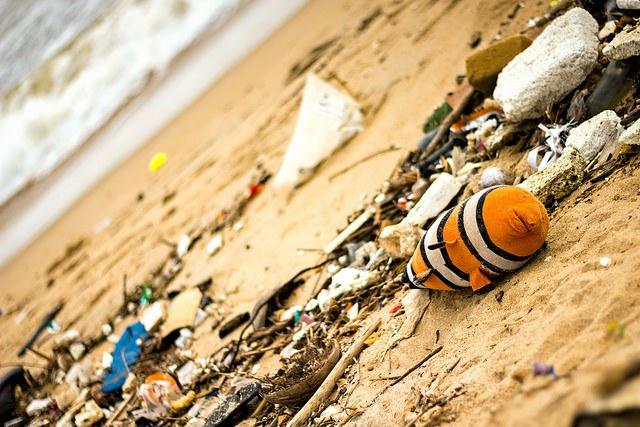

As the Paris climate negotiations closed last Saturday, you heard a great deal of hope and optimism as well as congratulations for vision and progress emanating from COP21. Indeed, important commitments have been made – but they’re pledges, not actions, and they don’t reverse the adverse climate change underway.
Which is why adaptation is more important than ever.
Among conference influencers, I heard many reasons against adaptation. Such projects aren’t bankable, contended the head of Regions20, a United Nations investor collaboration. Mitigation is more interesting, maintained a global nonprofit agriculture sustainability advocate. And from the United Nations' adaptation chief: Lessening greenhouse gases is the only thing insurance companies should spend money on.
But these leaders, among the most active climate actors at the historic conference, postpone adaptation at their peril – and so does the rest of the world. Consider the warnings that sound so loudly from Stanford and Berkeley calculations: Global incomes could decline 23 percent by 2100 relative to a world without climate change. And by 2030, annual costs of adaptation could be $150 billion to $300 billion a year, by the U.N.’s own estimate.
U.N. officials acknowledge that even in the best-case scenarios of greenhouse gas mitigation under the agreement, climate change will persist for at least three to four decades. So much for helping the health and safety of our children and grandchildren.
On the other hand, one group that seemed willing to consider adaptation at COP21 was the private sector:
- The sustainability director of Mars, Inc. noted that he often starts discussions with climate adaptation when conferring with his government hosts about doing chocolate business in Cote D’Ivoire, Ghana and Nigeria.
- An executive of nonprofit health plan Kaiser Permanente defined his role as climate adaptive in supporting human resilience.
- Investment firm South Pole Group, leveraging its growth in mitigation markets, has seen exponential growth in its developing-country water purification adaptation investment partnership.
- PepsiCo, a historic adaptation leader, continues to innovate throughout its food-and-beverage supply chain.
- The U.N. Global Compact had the courage and foresight to release a paper of adaptation best practices at its Caring for Climate business forum. The Notre Dame Global Adaptation Index (ND-GAIN) participated in creating The Business case for Responsible Corporate Adaptation document.
The biggest adapters at the COP21 negotiations seemed to be – wait for it – the United States government, which pledged $800 million for adaptation at the conference.
As I joined other tired souls exiting the climate talks and onto the crowded bus to the Metro station, I thought to myself: Adapt or bust. For while I share hope that countries will make good on the significant commitments emanating from COP21, I’m a pragmatist. I recognize from similar pledges made in both private and local government sectors over the years that the best of intentions differs from impact. And making good on mitigation commitments can be slow, failure-prone work.
Still, recognizing the important mitigation actions galvanized by COP21, I’m encouraged that the private sector is opening doors to new markets, creating collateral benefits, building efficiencies and innovating for adaptation. Well beyond the hope and promise of the Paris agreement, private-sector voices will help ensure that extreme events do not become disasters.
Image credit: Flickr/Premnath Thirumalaisamy
Joyce Coffee is managing director of the Notre Dame Global Adaptation Index (ND-GAIN), whose mission is to increase the world’s awareness about the need to adapt, informing public and private investments in vulnerable countries.
What is an Internal Carbon Price, and Should My Business Implement One?


By Hugh Jones
Polluters very rarely offer to pay for cleaning up the pollution they cause. Lessons from history tell us that when there are private profits and public costs, it usually takes an intervention from government to put a price on externalities.
Carbon emissions don’t respect national borders, so tackling a global problem like climate change is ultimately going to require a global solution. And slowly but surely the prospect of a worldwide price on carbon emissions is beginning to seem more likely, particularly following the latest international climate change agreement coming out of the Paris COP21 talks. This lays the groundwork in Article 6 for creating mechanisms and markets to reduce carbon emissions, both multilaterally and globally.
There is already considerable momentum behind carbon pricing around the world, with existing regional, national and subnational schemes currently covering around 12 percent of global emissions. Carbon taxes or emissions trading schemes are either operational or planned in the EU, U.S., China, Japan, South Korea, Switzerland, Norway, Turkey, Mexico, Chile, Thailand, Ukraine, Kazakhstan and South Africa.
With a strong global commitment to limit global warming to no more than 2 degrees Celsius, alongside the urgency of the challenge of addressing climate change, there is every reason to expect carbon pricing to continue its expansion.
The volume of emissions covered by such schemes has trebled over the past decade. China’s regional pilots are expected to turn into a national scheme from 2017. States in the U.S. and provinces in Canada are already linking their cap-and-trade schemes, with Mexico looking to get involved from 2017.
Internal carbon pricing
These are markets that matter for many companies, where paying for carbon emissions is becoming part of the cost of doing business.
In response to these schemes, or in anticipation of future carbon-pricing legislation, this year the CDP reported that 437 large companies say they now use an internal carbon price in decision-making. This is an increase from just 150 in 2014. A further 583 companies reported that they intend to use an internal carbon price in the next two years.
But what actually is an internal carbon price, and what are the advantages of implementing one?
There is no single method or price that is used. Broadly speaking, internal carbon pricing is most frequently used as a shadow price which can be added to future investments and operational costs as a way of hedging against future policy decisions to implement any carbon-pricing mechanisms.
As described in company testimonies contained within CDP studies, some of the key benefits of doing this include:
- To anticipate government legislation on carbon pricing
- To comply with existing government legislation
- To avoid intermediary/transaction costs associated with trading permits in national schemes in favour of factoring in these prices internally
- To justify investments that may have smaller margins without a carbon price
- To manage risk for future investments
- To monetise and record social cost
In some exceptional circumstances, a carbon price can underpin a more expansive company scheme. In 2012, Microsoft made the decision to use an internal carbon fee which was charged to individual business groups using Microsoft services. The funds from this internal tax were then used to invest in energy-efficiency initiatives, renewable energy and carbon offset projects in order to meet net carbon neutrality targets.
Since 2014, 100 percent of Microsoft’s energy consumption is sourced or offset due to these projects. In just three years, the company has reduced its emissions by 7.5 million tons of CO2 and saved more than $10 million on energy costs. This year it expects its scheme to amount to $20 million of internal charges.
Challenges and solutions
Useful work on carbon pricing implementation is starting to emerge to address these questions such as a recent study from the World Resource Institute and Caring For Climate. This finds one of the common challenges to setting an internal carbon price is a lack of guidance in knowing what price to set. This is related to a lack of clarity and certainty from climate policies at a national level. There are also issues with prices being set too low to actually affect investment decisions.
The good news is that it may be getting easier to predict the future. Many companies have now pledged to implement a carbon-pricing mechanism as part of their Intended Nationally Determined Contributions to action on climate change, submitted in Paris. The agreement by governments in Paris, alongside demands for action from the broad coalitions of corporates that came together, suggests that legislative action on carbon pricing will only become stronger.
Analysis by the U.K. government’s Department of Energy and Climate Change and the Carbon Trust estimates that, in a scenario where warming is limited to less than 2 degrees, the global price of carbon is expected to converge at $140 per ton of CO2 by 2030 and $400 by 2050. In a 1.5-degree scenario, these costs would be considerably higher.
Predicting the future and making decisions is one of the great challenges faced by the executives and non-executives responsible for long-term corporate strategy. Climate change will create both winners and losers, but setting an internal carbon price will help companies to better address the risks they face and choose the path needed for success in a sustainable, low-carbon future.
Image credit: Flickr/Thawt Hawthje
Hugh Jones is Managing Director of Advisory at the Carbon Trust.
Low-Cost Solar Replaces Expensive, Dirty, Dangerous Kerosene in Africa

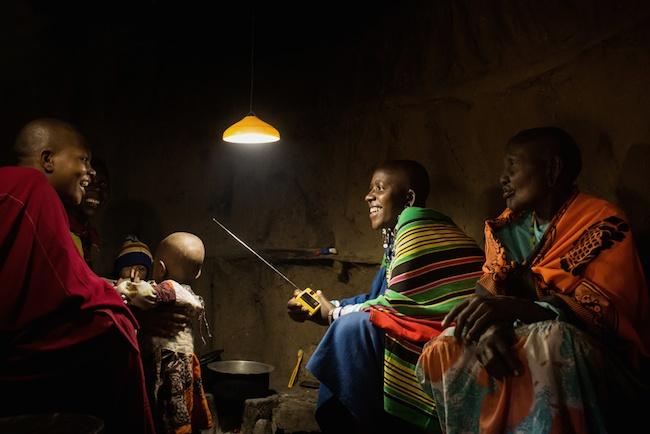
ExxonMobil CEO Rex Tillerson promotes petroleum as the only solution to "energy poverty" in developing nations, but affordable solar power is on the verge of completely undercutting his argument, at least when it comes to household lighting. In Africa, for example, the company Off Grid Electric is offering a soup-to-nuts solar lighting system aimed squarely at replacing kerosene.
Off Grid Electric has been introducing its solar model in Tanzania, and with a new round of $70 million in financing, it is set up for a major expansion.
The end of kerosene
Relieving households from the health and safety hazards of burning kerosene indoors is the key advantage of solar power.
A paper prepared for the 2013 Off-Grid Lighting Conference identified the following risks from kerosene lighting:
"... burns caused by a wide variety of factors, indoor air pollution, non-intentional ingestion of kerosene fuel by children, suppressed visual health, and compromised health services and outcomes in facilities lit with fuel-based light. Each risk factor results in illness, and most in mortalities. Lighting is the dominant and sometimes only use of kerosene (referred to as paraffin in some parts of the world) in rural areas ..."
That's just the summary. The statistics cited in the report make it clear that adding more kerosene to emerging markets is literally adding fuel to the fire. Beyond fire risks and exposure to dangerous levels of airborne pollutants, that includes poisoning (accidental ingestion of kerosene is "the leading cause of child poisoning in developing countries") and vision problems related to habitual use of insufficient lighting.
Regardless of Mr. Tillerson's point of view, clearly kerosene needs to be replaced with a safer, healthier alternative.
The solar advantage
That's where Off Grid Electric comes in. This year, the company has accumulated a $70 million pool of solar financing that will enable it to expand its lease-based distributed solar model in Africa.
The lease model enables kerosene users to acquire solar power within their existing energy budget. Consumers with no formal credit record can use the platform to establish a credit record, too.
Over the next three years, Off Grid Electric will leverage its partnership with the Tanzanian Investment Center to provide off-grid solar electricity to 1 million households. In addition to providing solar power for lighting, the system also enables users to power small appliances and recharge cell phones.
The U.S. Agency for International Development contributed $5 million to the $70 million solar pot with this observation:
"In Tanzania, approximately 40 million people lack access to electricity. Off Grid Electric currently provides affordable, reliable light and energy services to 10,000 new households per month to families faced with an expensive grid, an unreliable grid, or no grid access at all.
"Off Grid Electric borrows from the telecom industry's business model: rather than purchasing costly solar systems, customers pre-pay for electrical services using "mobile money" and are able to access small-scale, radically efficient solar home systems with integrated appliances."
The U.S. oil export ban
As a distributed solar provider, Off Grid Electric complements the Power Africa initiative, aimed at adding 30,000 megawatts of "new and cleaner" power generation to the continent, to bring 60 million new electricity connections to the grid.
Power Africa also includes biodigestion and other off grid electricity solutions that leverage local and scavenge-able resources.
Renewable energy is also challenging Africa's petroleum dependency in the cookstove field, where solar power is among the alternative sources edging into the marketplace.
With all this activity in mind, if petroleum fans were hoping that the newly-lifted U.S. oil export ban would expand the market in Africa and other developing regions, there may be some disappointment in store.
Image credit: Off Grid Electric, used with permission
AP Investigation Finds Thai Shrimp Industry Filled With Forced Labor


Thailand’s shrimp industry is linked to human rights abuses and even slave labor. The Associated Press (AP) conducted an investigation into the shrimp industry this year and found that migrants work under terrible conditions. Some work 16-hour days peeling shrimp and receiving meager wages. If they try to leave, they are returned and forced to keep working. Some of the shrimp workers are children.
The AP investigation chronicles the story of a migrant shrimp worker and his wife. Named Tin Nyo Win, the man was called No. 31 by his boss -- stripped even of the dignity of being called by his name. The husband and wife “ripped the guts, heads, tails and shells off shrimp bound for overseas markets, including grocery stores and all-you-can-eat buffets across the United States,” the AP reported.
Tin Nyo Win and his wife, Mi San, peeled “about 175 pounds of shrimp for just $4 a day,” the AP investigations found. Five months into forced labor, they decided to run away, but Mi San was captured less than 24 hours later. Tin Nyo Win watched as his wife, who was pregnant, was “dragged away by her hair.” Almost two weeks later, he found her with help from a local labor rights group that prompted police to do something.
After Mi San was found, she was taken to the police who forced her to go back to work, taking her and her husband to another factory. Four days later they were arrested, held on almost $4,000 bail, and charged with illegally entering Thailand and working without permits.
This latest AP story is one of a series investigative reports on the Thai seafood industry. For this story, AP journalists “followed and filmed trucks loaded with freshly peeled shrimp from the Gig shed to major Thai exporting companies and then, using U.S. customs records and Thai industry reports, tracked it globally,” the AP story states. The Gig shed is where Tin Nyo Win and Mi San worked.
Americans love their shrimp and eat 1.3 billion pounds a year, as the AP story points out. And some of the shrimp they eat is a product of forced labor. The shrimp processed by people like Tin Nyo Win and Mi San found its way to U.S. retailers and restaurants like Walmart, Kroger, Whole Foods, Dollar General, Petco, Red Lobster and Olive Garden. The shrimp also made it into the supply chains of well-known seafood brands and pet foods such as Chicken of the Sea and Fancy Feast. The AP sent reporters into supermarkets in all 50 states and found “shrimp products from supply chains tainted with forced labor.”
One of the companies linked to shrimp from forced labor is Thai Union, which has also been linked to tuna from forced labor. Earlier this month, the company announced that, by Dec. 31, it will bring all shrimp processing operations in-house. “The move will provide us with full oversight of all processing stages,” the company said in a statement.
Greenpeace released a report last month on human rights abuses in the tuna industry. The report linked Thai Union “to the darkest sides of the seafood industry: human rights abuses, the wholesale waste of marine life, and the killing of endangered species with destructive fishing methods.” Greenpeace found that, although Thai Union has taken some steps to clean up its tuna supply chain, more action is needed.
Given the size of Thai Union, it has an “unrivaled position to drive positive changes” in both the tuna and shrimp industries, as Greenpeace put it. If the company ensured its supply chain is completely free of forced labor, it would impact Thailand’s entire seafood industry and help bring positive changes to the working conditions far too many workers face.
Image credit: Flickr/S Khan
Environmental Laws and Compliance in India Should Follow Maslow’s Hierarchy of Needs


By Meghna Tare
Stories are how we humans arrange and recount our experiences of the world so that others will want to listen and learn and from them. They allow us to create order out of the chaotic experiences of our senses. People who tell and believe in the same stories hold the same values and share a worldview from their lens. A good story is therefore a fundamental ingredient in allowing humans to create a sense of us: shared stories, shared values, shared worldview -- us.
W.S. Merwin, the poet and naturalist, reminds us that we as humans have one story, and only one story to tell in our life, and that “When there is no story, that will be our story. When there is no forest that will be our forest." Our lives as humans on this planet earth will have no meaning and story to tell unless we feel in our passing that we were able to serve the nature and humanity that gave us breath, water, soil and soul!
History and story of mankind has proved time and again that certain issues with respect to the environment must rest on the fundamental principle of valuing human rights and human life in order to change our systems and practices, so that we become improved and better nation and planet.
Every nation has an environmental story to tell! Love Canal, Bhopal Gas Tragedy, Minamata disease, Exxon Valdez oil spill -- all of these stories tell of human failure to protect life and environment. India is no different.
India's story
India is the seventh-largest country by area, the second-most populous country with over 1.2 billion people, and the largest democracy in the world. It is home to the ancient Indus Valley Civilization -- rich in culture, diversity and history. The Indian economy is the world's seventh-largest by nominal GDP and third-largest by purchasing power parity (PPP). Following market-based economic reforms in 1991, India became one of the fastest-growing major economies. India became the first country in the world to write corporate social responsibility (CSR) into legislation in April 2014, forcing companies to invest in sustainability programs. While the debate continues if India is a developed or developing country, it continues to face the challenges of poverty, corruption, malnutrition, inadequate public healthcare and environmental pollution.
Air pollution, poor management of waste, growing water scarcity, falling groundwater tables, lack of electricity, shortage of natural resources, water pollution, preservation and quality of forests, biodiversity loss, and land/soil degradation are some of the major environmental issues India faces today. According to data collection and environment assessment studies of World Bank experts, between 1995 through 2010, India has achieved progress in addressing its environmental issues and improving its environmental quality. Still, India has a long way to go to reach environmental quality similar to those enjoyed in developed economies. Pollution remains a major challenge and opportunity for India.
Bangalore, the Silicon Valley of India, is a hub for information technology companies. It is also the aviation capital of India, accounts for more than 65 percent aerospace business, headquarters some of the largest public-sector heavy industries, and is a proposed destination for the automotive industry. It also ranks second in the list of most polluted cities in India. Once known as the City of a Thousand Lakes, it is now labeled as “a land of a thousand sewage tanks."
The Bellandur Lake southeast of Bangalore is so polluted that in May 2015, it caught fire. Bellandur lies near the southern end of the chain of lakes and receives more than 130 million gallons per day of untreated or partially treated sewage from homes and industries across the city, far more than it can filter naturally. This wastewater contains detergents high in phosphorous, used by Indian manufacturers to soften hard water. That also contributes to the foam. The United States began restricting the use of phosphates in detergents in the 1970s after finding they were killing off aquatic life in the Great Lakes, but India has no such regulations.
Increased entry of untreated sewage water into the lake bed resulted in an unaerobic condition (absence of oxygen). When oxygen is cut off, toxic and combustible gases develop over the surface of water which is covered with froth. The flammable foam rose to 12 feet due to rain, and spilled onto the banks of the lake, destroying nearby wetlands and causing allergic reactions in some residents in the area. Officials of the Karnataka Pollution Control Board (KSPCB) suggested that all wetlands surrounding the lake that act as natural purifiers have been destroyed, and this has complicated the situation.
Industries have mushroomed in the area with no controls or regulations. State and municipal agencies that share responsibility for the lakes have not identified the polluters, instead blaming one another as the fires made national headlines. The Karnataka State Pollution Control Board threatened to file suit against the Bangalore Water Supply and Sewage Board for failing to stop the contamination. The sewage board in turn claims that it is KSPCB’s responsibility to find and cite those responsible for the illegal dumping. The sewage board has asked for $156 million to set up new treatment plants on Bellandur and Varthur lakes. However, the local authorities are deep in debt and cannot afford to support this financially.
Discharge of untreated sewage is the single most important cause for pollution of surface and ground water in India, where there is a large gap between generation and treatment of domestic waste water. The problem is not only that India lacks sufficient treatment capacity, but also that the sewage treatment plants that exist do not operate and are not maintained. The majority of the government-owned sewage treatment plants face closure due to inefficiency, improper design, poor maintenance and lack of reliable electricity supply to operate the plants, together with absentee employees and poor management. The waste water generated in these areas percolates in the soil or evaporates. The uncollected wastes accumulate in the urban areas cause unhygienic conditions and release pollutants that leach to surface and groundwater.
If history has taught us anything, it is that pollution’s destructive nature is not only prevalent in developing nations. In the U.S., the Cuyahoga River in Ohio famously caught fire in the late 1960s. Sewage from the city was pumped into the river, resulting in a brown color and common oil slicks. The water became sludge, and all the fish died as a result. The Cuyahoga River fire was the catalyst for the start of the environmental movement in the U.S in the 1960s. It resulted in the Clean Water Act (1972), the Great Lakes Water Agreement, and the creation of the Environmental Protection Agency (EPA).
Similarly, in the wake of the Bhopal Gas Tragedy, the government of India enacted the Environment Protection Act of 1986 under Article 253 of the Constitution. Passed in March 1986, it came into force on Nov. 19, 1986. The purpose of the act is to implement the decisions of the United Nations Conference as it relates to the protection and improvement of the human environment and the prevention of hazards to human beings, other living creatures, plants and property. The act is an “umbrella” legislation designed to provide a framework for central government coordination of the activities of various central and state authorities established under laws, such as the Water Act and the Air Act.
Maslow’s Hierarchy of Needs
Humanist psychologist Abraham Maslow believed that people have an inborn desire to be self-actualized, to be all they can be. In order to achieve this ultimate goal and be productive, however, a number of more basic needs must be met first, such as the need for food, safety, love and self-esteem -- known as Maslow’s Hierarchy of Needs.
Similarly, environmental protection and compliance in a country like India will be successfully implemented and monitored if the basic needs and demands of human life are met first. Sustainable development and environmental protection rest on the fact that everyone has access to clean sanitation, potable drinking water and electricity, and then compliance with the Environmental Protection Law follows naturally.
Everything is part of the puzzle, and applying linear thinking strategy toward sustainable development and environmental protection for a developing country like India is not very effective. As the world adopts the 2030 Sustainable Development Goals (SDGs) presented by the 193-member United Nations General Assembly, developing countries like India need to go back to the design board and start from the basics, think about the Maslow’s Hierarchy of Needs, and design a plan and framework that helps them get there -- keeping in mind that all the environmental issues that India is facing is part of a larger system. Everything else will follow slowly and gradually.
In the words of Peter Senge, the founder of the Society for Organizational Learning, a faculty member at MIT Sloan School of Management, and the author of "The Fifth Discipline": “To make progress on environmental issues, organizations must first understand that they’re part of a larger system."
Image credit: Flickr/Ashwin Kumar
Meghna is the Executive Director, Institute for Sustainability and Global Impact at the University of Texas at Arlington where she works collaboratively with faculty, staff, the student body, and community members to address opportunities to promote sustainability in greening facility operations, promoting innovative research, and supporting and encouraging student initiatives. She recommends policies and strategies to advance the university’s commitment to sustainability. She is a TEDx UTA speaker, graduated with an MBA in Sustainable Management, was featured as Women in CSR by TriplePundit,, and is an active blogger. She has a sunny and positive attitude about life and all of its adventures, and is a relentless optimist who enjoys building strong relationships and partnerships. You can connect with her on LinkedIn, follow her on Twitter @meghnatare or visit her website.
Two Pivotal Events Contribute to Shaping a More Humane World
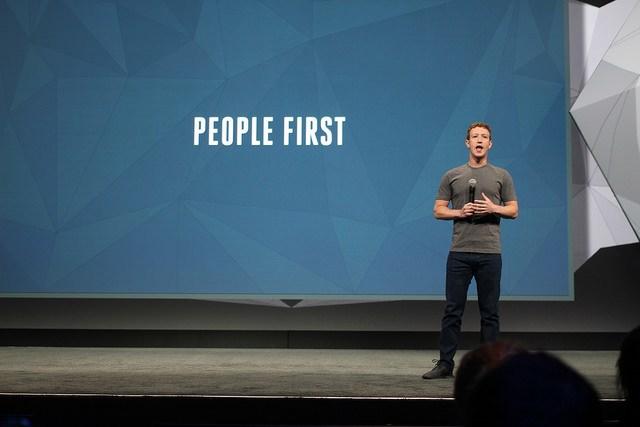

By Carol Cone
The news crawler on CNN has certainly been filled with tragic and depressing stories of late. But within the past month, two significant announcements were made that bode well for our future: the birth of baby Maxima Chan Zuckerberg (love the powerful girl's name) and the launch of Howard Warren Buffett’s new company, i(x) Investments. Both debuts are related to social impact, and should give us significant reason to restore at least some of our faith in humanity.
The birth of “Max” to Facebook founder Mark Zuckerberg and his wife Dr. Priscilla Chan was more than special. It was momentous. That’s because baby Max’s parents chose to celebrate the arrival of their first child with an unprecedented gift to the world. In an open letter to their daughter, Zuckerberg and Chan committed to giving away 99 percent of their Facebook shares – currently valued at $45 billion – during their lifetimes, to advance human potential and promote equality. They will do this through the creation of the Chan Zuckerberg Initiative.
Zuckerberg wrote that he and Chan, and our society, have a moral responsibility to leave the world a better place for all future children. In his letter, posted on Facebook, naturally, he vowed to create change by working to eliminate inequality and giving every child a chance at education. Our society, he said, must do this not only for justice or charity, but also for the greatness of human progress.
He called this philanthropic quest simply an “investment.” I call it a bellwether development in the evolution of our global community and in social purpose – because of the size of the commitment, of course, but also because of its direction and focus on equal opportunity. In a world that still does not value girls and women on par with boys and men, this timely declaration from a high-profile leader should set the tone for technology leaders and others to follow.
The fact that the Zuckerberg’s child is a girl will almost certainly boost the growing global awareness that helping girls reach their potential has a measurable positive impact on economies, families and social stability worldwide.
Adding the Chan Zuckerberg commitment (note the order of the name) to equality for children’s education should accelerate and amplify current girls’ education initiatives such as the Girl Effect, 10Times10/Girl Rising, Girl Up, Girls Who Code and the Malala Fund.
Meanwhile, another famous name also weighed in with some positive news. i(x) Investments, co-founded by Howard Warren Buffett – the 32-year-old grandson of billionaire Warren Buffett – and co-founder Trevor Neilson, is a forward-looking approach to fund early-stage and undervalued companies working on issues such as clean energy, sustainable agriculture and water scarcity.
“I’m looking for that sweet spot,” Buffett told the New York Times. “How do we improve society through these investments? How can we be creative with capital to address some of the greatest human needs?”
Now, the i(x) founders say, investors want to put their capital to work in ways that will not simply avoid doing bad, but actually do some good in the world. “Investors in the past haven’t seen their investments as an expression of their values,” Neilson said. “There is an evolving consciousness in the world which presents an historic opportunity for both social change and profit.”
The Zuckerberg and Buffett announcements reinforce the need to take the long view on solving vexing societal problems; to work in collaboration with experts and leaders to listen, shape policy and foster innovations that meet real, not imagined, needs; and to be willing to try and sometimes fail in the effort to learn and improve. That’s progress.
Just as importantly, the emergence of super-rich, super-smart leaders in the private sector who see the need to contribute to a better world – because they can – is a very positive societal development.
For all of us who work in the space of making social progress through vibrant and innovative public/private partnerships, these two announcements underscore how purpose is not a trend, but the new needed normal for our collective future. And that’s worth a nice warm smile, no matter what the other news headlines say.
Image credit: Flickr/Maurizio Pesce
Carol Cone, often referred to as “the mother of cause marketing,” recently launched a new purpose-driven consultancy called Carol Cone On Purpose [www.purposecollaborative.com].
Over-hunted tropical forests could make climate change worse


The extinction of large animals from tropical forests could make climate change worse – according to researchers at the University of East Anglia.
New research published in Science Advances reveals that a decline in fruit-eating animals such as large primates, tapirs (pictured above) and toucans could have a knock-on effect for tree species. This is because large animals disperse large seeded plant species often associated with large trees and high wood density - which are more effective at capturing and storing carbon dioxide from the atmosphere than smaller trees.
Seed dispersal by large-bodied vertebrates happens via the ingestion of viable seeds that pass through the digestive tract intact.??Removing large animals from the ecosystem upsets the natural balance and leads to a loss of heavy-wooded large trees, which means that less CO2 can be locked away.
The study was led by researchers from São Paulo State University in Brazil, in collaboration with UEA, the Spanish National Research Council (CSIC) and the University of Helsinki, Finland.
Prof Carlos Peres, from UEA’s School of Environmental Sciences, said: “Large birds and mammals provide almost all the seed dispersal services for large-seeded plants. Several large vertebrates are threatened by hunting, illegal trade and habitat loss. But the steep decline of the megafauna in overhunted tropical forest ecosystems can bring about large unforeseen impacts.
“We show that the decline and extinction of large animals will over time induces a decline in large hardwood trees. This in turn negatively affects the capacity of tropical forests to store carbon and therefore their potential to counter climate change.”
Acquiring a taste for the circular economy
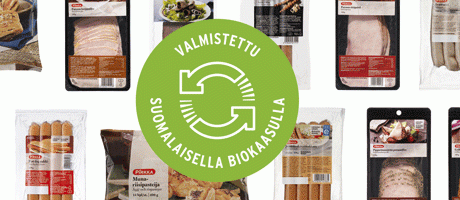

Food waste is a growing scandal which now has the public’s full attention. In the United States and much of Western Europe, food scraps constitute around 19% of the waste dumped in landfills, where it ends up rotting and producing methane, a greenhouse gas. This is not only undesirable in terms of sustainability and environmental impact but costly for food retailers paying high disposal costs.
So imagine if this food waste could be turned into zero emissions energy which in turn is used to manufacture the food sold on the supermarket shelves. This is the neat solution being pioneered by the Helsinki based Finnish retail conglomerate Kesko Corporation which has more than 1,500 stores across Scandinavia, the Baltics, Russia and Belarus.
Kesko’s unavoidable edible food waste is already largely distributed to charities as food aid. Now food which is no longer fit for human consumption – is moldy or rotten or has been in some other way contaminated – and which has previously been composted or burnt, is collected and turned into 100% renewable Finnish biogas which is piped into the factories producing Kesko’s popular Pirkka own-brand foodstuffs.
In one move food waste is abolished and products on the shelves are made using zero emissions renewable energy. With this perfect example of the circular economy in action Kesko is able to push ahead with its commitment to sustainability as well as steal a march on its competitors.
“We are always looking for ways to do better, to keep reducing our environmental impact, reducing wastage and the volume of waste that ends up composted or in burning facilities,” says Matti Kalervo, vice president of Corporate Responsibility at Kesko Corporation. “Of course this is about standing out from our competitors but it also reflects our genuine commitment to the environment which I am passionate about. As a big company we are in a position to make a difference.”
Indeed, Kesko is already is a sustainability forerunner having risen to fifth place in the Global 100 Most Sustainable Corporations in the World list announced earlier this year at the Davos World Economic Forum and the company has appeared on the list every year since it was established in 2005.
In 2008, Kesko committed to save 65 GWh by the end of 2016. As much as 98% of this objective has already been achieved.
So when Kalervo presented the biogas idea to Kesko’s grocery division a year ago it was an easy sell within the company. Almost a year of negotiations followed with Gasum, which manufactures the biogas, and with the two Kesko own-brand production facilities chosen to pioneer the project.
“The negotiations mostly involved costings as biogas is slightly more expensive than the natural gas the factories were previously using,” says Kalervo. “In order not to pass the cost onto the consumer, we agreed to split the costs with the factories which meant only a small increase each and which should easily be offset by the reputational benefits both for us and for our suppliers.”
The beauty of replacing natural gas with biogas is that the switch itself is cost and hassle free as biogas is piped through existing natural gas pipelines so there are no logistical or installation demands on the customer.
Now biowaste from almost 100 K-food stores in the Uusimaa region as well as the Keslog warehouses in Hakkila, Vantaa, is taken to the Labio biogas plant in Lahti, and the biogas produced is transmitted via the Gasum gas network to the Myllyn Paras and Wursti production facilities which make Kesko’s popular own-brand Pirkka range.
Recycling waste into biogas and using this energy in the manufacturing of Pirkka products will help cut annual carbon dioxide emissions by 380 tonnes – equivalent to the emissions generated by driving a car for more than three million kilometres.
The first “made with 100% renewable Finnish energy” labelled products appeared on Kesko shelves in Finland in September – meat rice and egg rice pasties from the Myllyn Paras factory and sausages and cold cuts from Wursti – backed up by a customer education campaign.
The products appeal to customers on two levels - firstly that they are, including the energy used in their production, 100% Finnish and secondly because the use of biogas eliminates both food waste and carbon emissions. “It is hard to say which of these two they like most,” says Kalervo.
Olli Nevalainen, Product Manager for biogas at Gasum agrees. “The fact that biogas is 100% Finnish is as attractive as the fact that it has zero emissions,” he says. “Natural gas, in Finland, is imported from Russia and involves CO2 emissions. Biogas not only has zero emissions but also uses 100% Finnish waste and is produced in Finland making it local, renewable and sustainable.”
Despite being marginally more expensive than natural gas, biogas is gaining in popularity across Finland with both large companies and private householders opting to switch.
“Our upgraded biogas is as efficient to use as natural gas and can be used wherever natural gas is currently used,” says Nevalainen, “from powering industry to household heating, restaurant kitchens to transport fuel. We started producing biogas in 2011 and already have a 60% share of the Finnish transport market in gaseous fuels with buses and private drivers switching from natural gas to biogas.”
Indeed, a study (Eurobarometer 2013) shows that 84% of Finns are happy to pay 5% more for environmentally friendly products. Better news still is that the more customers who switch to biogas the cheaper the production becomes. “Obviously we have started small, with just three plants” says Nevalainen. “Production and maintenance costs are higher in a small scale operation. However we now have another plant opening soon and we are continually looking for ways to make the plants themselves more energy efficient and sustainable.”
Back at Kesko, with the initial biogas produced products selling well, Matti Kalervo and his colleagues are now negotiating with a further twenty supplier factories to make the switch to biogas. “The Pirkka brand alone offers 2,500 products and so far only 15 of these are being made with biogas so we have plenty of room to expand the initiative.
“The two factories that have already switched are delighted with the results. They have benefitted both by reducing their emissions and boosting their reputation as pioneers in sustainability initiatives. Plus, of course, the more popular the products become the more they will benefit from increased orders.
“We are all winners,” he says, “the producers, we the retailers by standing out from the competition and our customers who are able to make a positive choice in favour of zero emissions products. And most importantly, of course, the environment.”